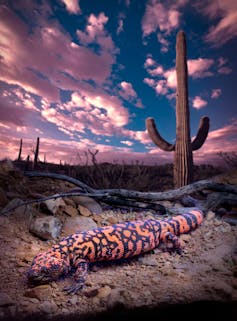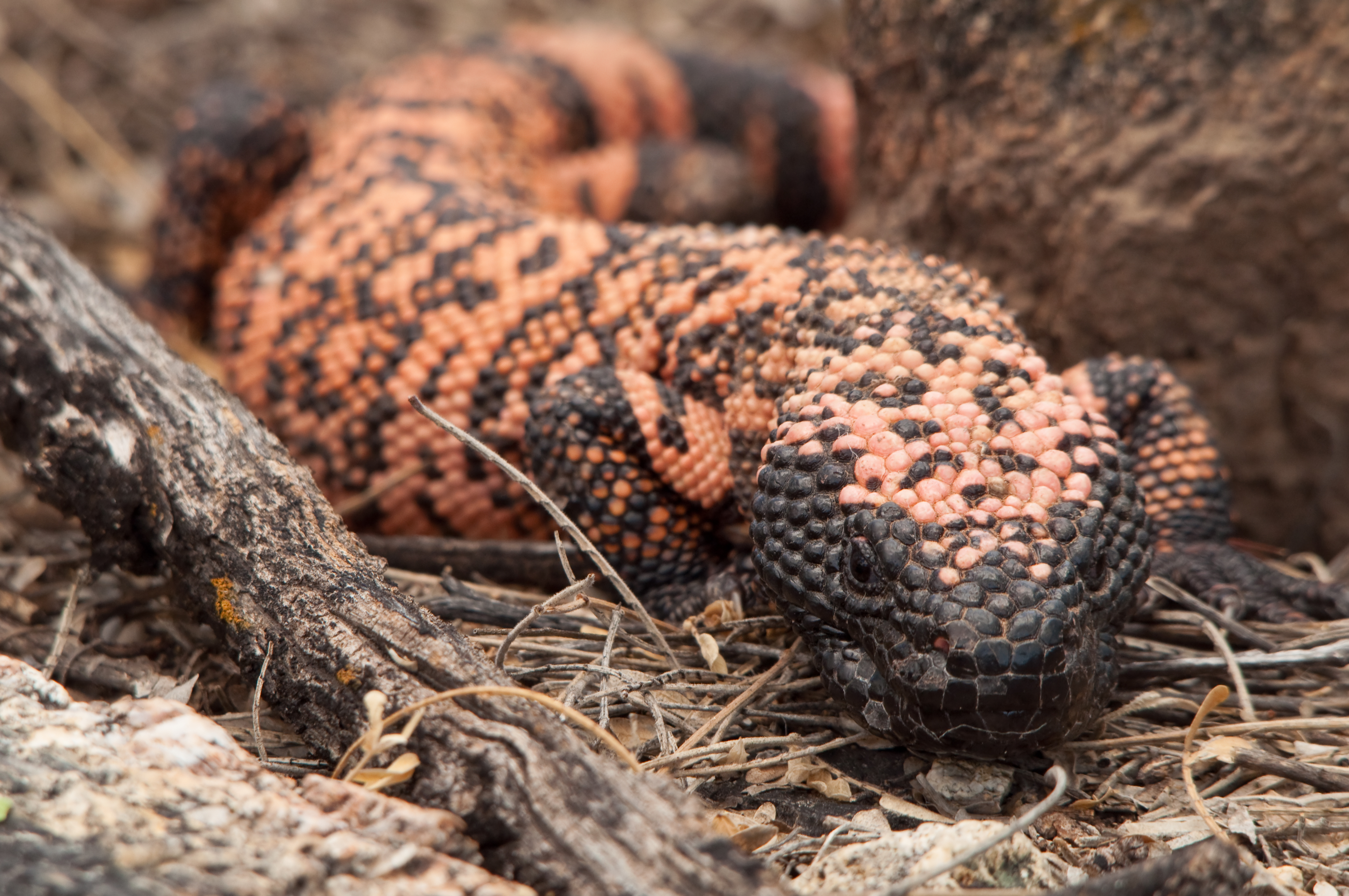The Pacific yew tree is a fairly small and slow growing conifer native to the Pacific Northwest. The Gila monster is a lizard with striking orange and black markings from the drylands of the Southwestern US and Mexico. Two very different organisms, but with a fascinating connection.
They’ve both given us drugs that have saved and improved the lives of millions of people. Paclitaxel, originally isolated in 1971 from the bark of the Pacific Yew tree, is so important for treating various cancers that it is one of the World Health Organisation’s “Essential Medicines”. This compound has been studied in more than 3,000 clinical trials. It’s safe and effective and it generates sales of around US$80-100m per year.
Nature’s medicinal marvels
Exenatide, a synthetic version of a compound found in the saliva of the Gila monster, is an injected treatment used by as many as two million people with type 2 diabetes. In 2014, exenatide products generated sales of US$767m. Not only that, but exenatide has also been shown to have potential in the treatment of Parkinson’s Disease.
These two examples illustrate how significantly compounds sourced from nature can benefit public health, but they also tell a deeper story of how we fail to protect nature. Up until fairly recently, paclitaxel had to be isolated from the bark of wild Pacific yew trees, which meant stripping the bark and killing these rare and slow growing trees.

In 1977, demand for the drug generated an order for 7,000lbs (3,175kg) of bark, which yielded a mere 132 grams of paclitaxel. This demand destroyed 1,500 trees, damaging the native environments in which they grow. This destruction continued until 1994 when chemists came up with a way of synthesising paclitaxel.
The production of exenatide does not require the maceration of thousands of Gila monsters, thankfully. However, despite the huge sums generated by the sale of the compound, the delicate habitats where this lizard and countless other species live are threatened by development and climate change.
The cost of environmental destruction
When it comes to discovering medicinal products found in nature, we’ve barely scratched the surface. With every habitat that falls to the chainsaw or disappears under the plough or concrete, we impoverish nature and deprive ourselves of potential medicines.
The molecular diversity of life on Earth is effectively limitless, but it is under threat. Conservative estimates suggest that we are losing one important drug every two years because of our onslaught on the natural world.

Perversely, this onslaught comes amid a new golden age of discovery. Tools, such as DNA sequencing, can reveal “new” species hiding in plain sight, while advances in mass spectrometry, genomics and genetic engineering have allowed us to harness their molecular diversity without excessive harvesting of wild specimens.
Although the potential of natural products is undisputed, the enormous amount of effort and resources required to bring a promising molecule to market is offputting. Not only that, but unscrupulous “bioprospectors” have illegally collected living material, often from developing countries. These predatory practices prompted legislation that now hinders legitimate natural products research that seeks to protect biodiversity.
Read more: Drugs from bugs: the next blockbuster medicine could be lurking inside an insect
Unlocking nature’s potential
Magainin was the first anti-microbial protein discovered in an organism, isolated from the skin secretions of the African clawed frog. The discovery stems from the observation that surgical wounds on these frogs rarely become infected despite non-sterile procedures and conditions. Efforts to commercialise this molecule were mired in difficulties and today, despite the promise of a potentially transformative drug to treat infections, no magainin products are available.
Natural products give us a compelling angle for the protection of overlooked species and their habitats, but we need an ethical and transparent approach for developing them. To some extent, this is the goal of the Convention on Biological Diversity and the Nagoya Protocol– international agreements on sharing the benefits derived from biodiversity fairly.
But as a result of these treaties, the academics working to find new drugs in nature must meet the same regulatory requirements as companies with commercial intent. Extensive permitting requirements mean many academic scientists are avoiding international collaborations to study biodiversity altogether – hampering the discovery of new molecules.

Governments need to support research efforts and collaboration between scientific disciplines such as ecology and biochemistry, with investment and infrastructure. Building trust with communities that live where natural products are sourced is also critical.
These steps could create a system of natural product research and development with a greater appreciation of nature’s value. Ultimately, the equal sharing of benefits derived from drug discoveries will help conserve nature. However, the clock is ticking and with every day that passes species and their unique chemistry are lost forever.
Nature is a public library of information waiting to be accessed. The science, technology and political will to read this library is being ignored while destruction continues and companies hoard resources that have been harnessed from nature for profit. We are destroying the best library in the world in order to build a writer’s workshop, open only to the few.
Originally published in The Conversation.



